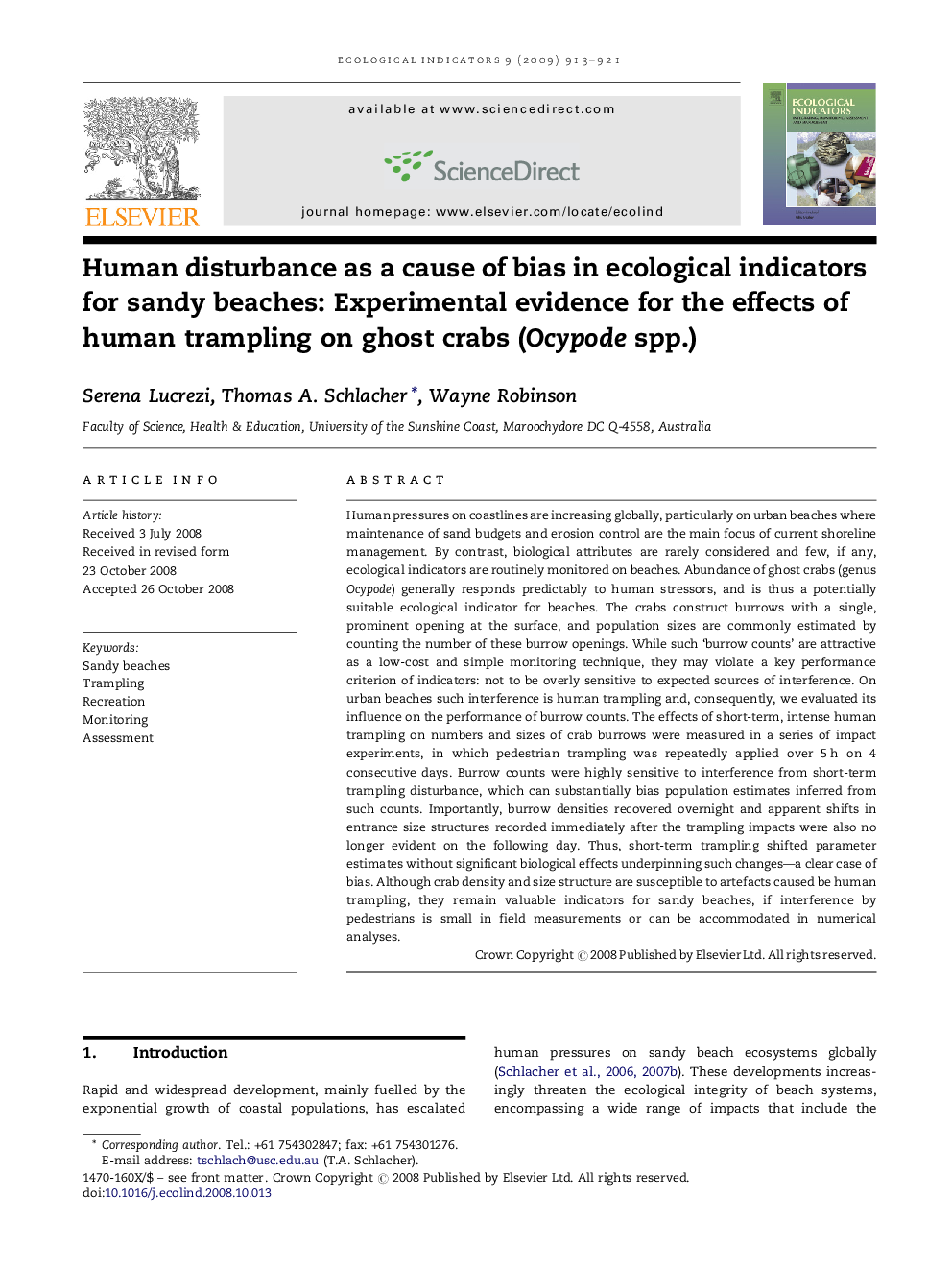| Article ID | Journal | Published Year | Pages | File Type |
|---|---|---|---|---|
| 4374516 | Ecological Indicators | 2009 | 9 Pages |
Human pressures on coastlines are increasing globally, particularly on urban beaches where maintenance of sand budgets and erosion control are the main focus of current shoreline management. By contrast, biological attributes are rarely considered and few, if any, ecological indicators are routinely monitored on beaches. Abundance of ghost crabs (genus Ocypode) generally responds predictably to human stressors, and is thus a potentially suitable ecological indicator for beaches. The crabs construct burrows with a single, prominent opening at the surface, and population sizes are commonly estimated by counting the number of these burrow openings. While such ‘burrow counts’ are attractive as a low-cost and simple monitoring technique, they may violate a key performance criterion of indicators: not to be overly sensitive to expected sources of interference. On urban beaches such interference is human trampling and, consequently, we evaluated its influence on the performance of burrow counts. The effects of short-term, intense human trampling on numbers and sizes of crab burrows were measured in a series of impact experiments, in which pedestrian trampling was repeatedly applied over 5 h on 4 consecutive days. Burrow counts were highly sensitive to interference from short-term trampling disturbance, which can substantially bias population estimates inferred from such counts. Importantly, burrow densities recovered overnight and apparent shifts in entrance size structures recorded immediately after the trampling impacts were also no longer evident on the following day. Thus, short-term trampling shifted parameter estimates without significant biological effects underpinning such changes—a clear case of bias. Although crab density and size structure are susceptible to artefacts caused be human trampling, they remain valuable indicators for sandy beaches, if interference by pedestrians is small in field measurements or can be accommodated in numerical analyses.
